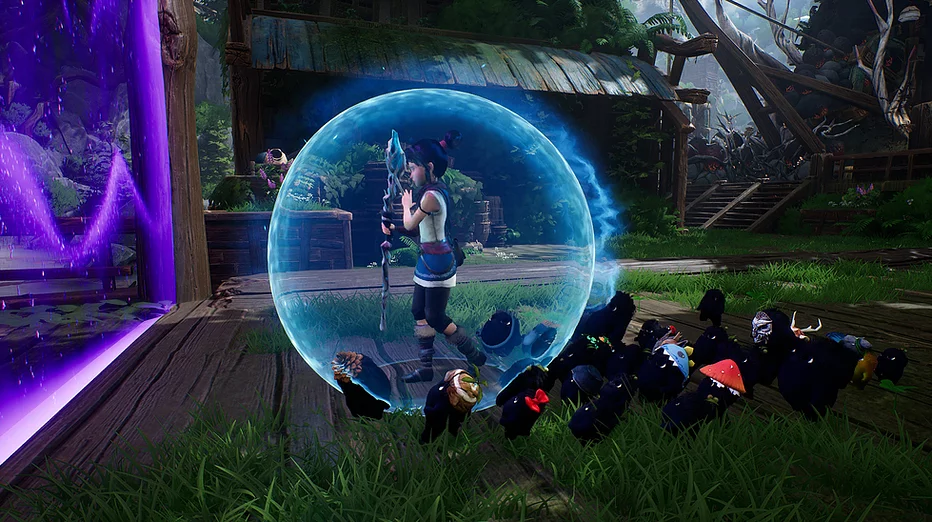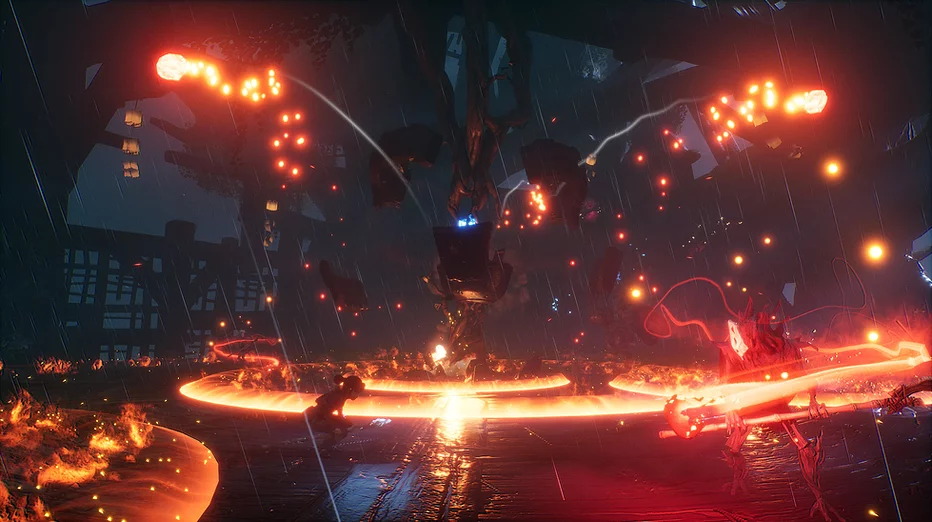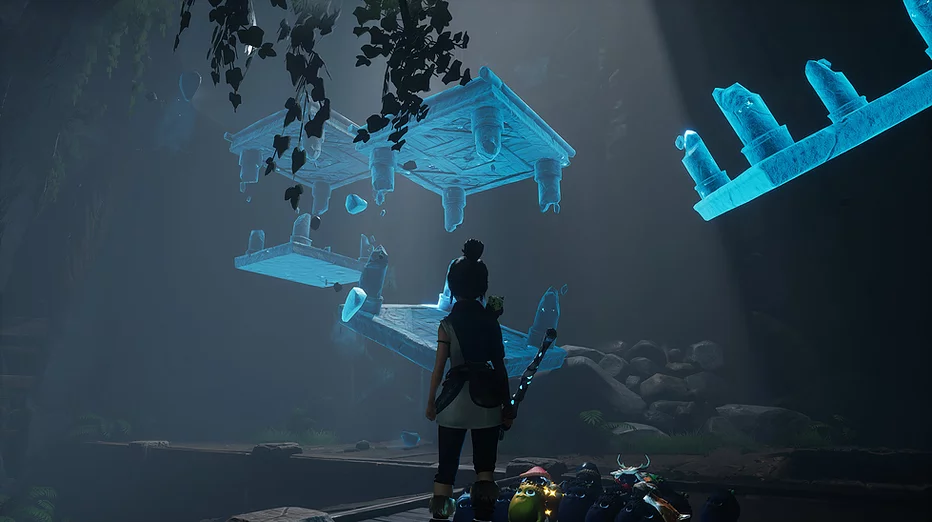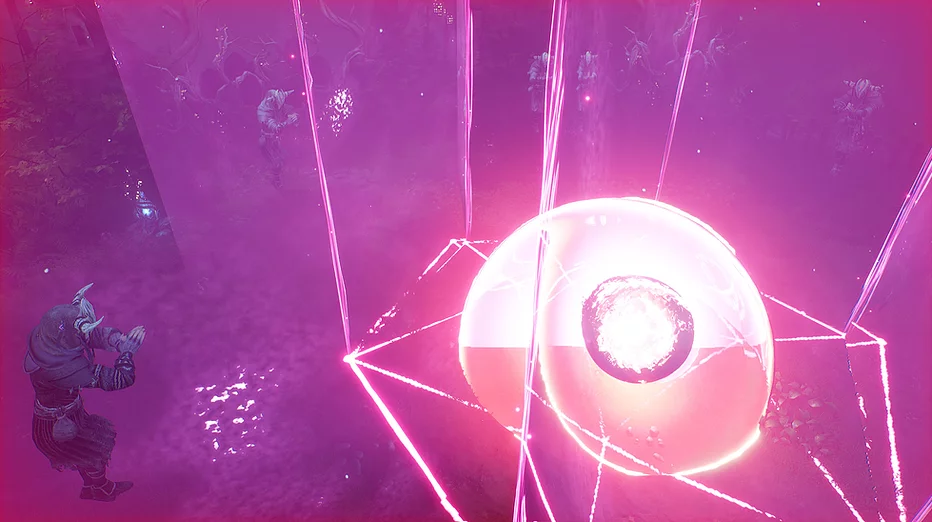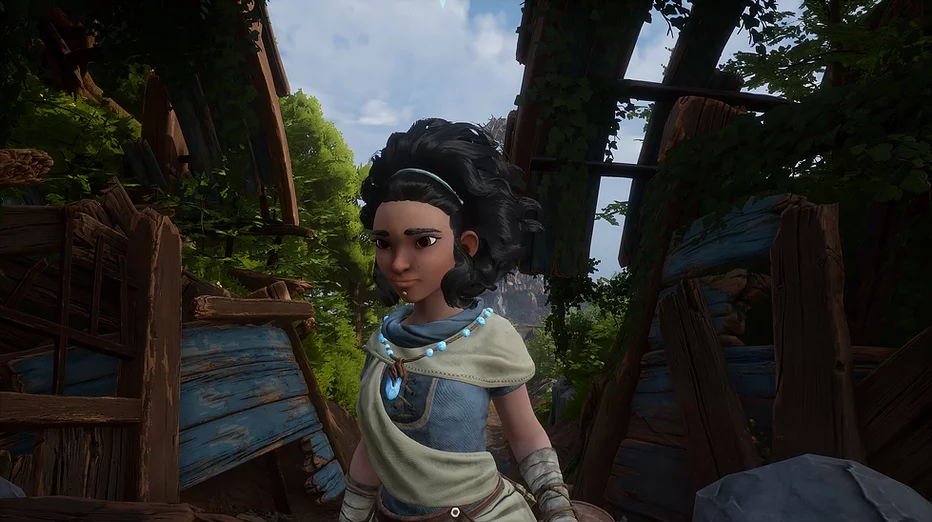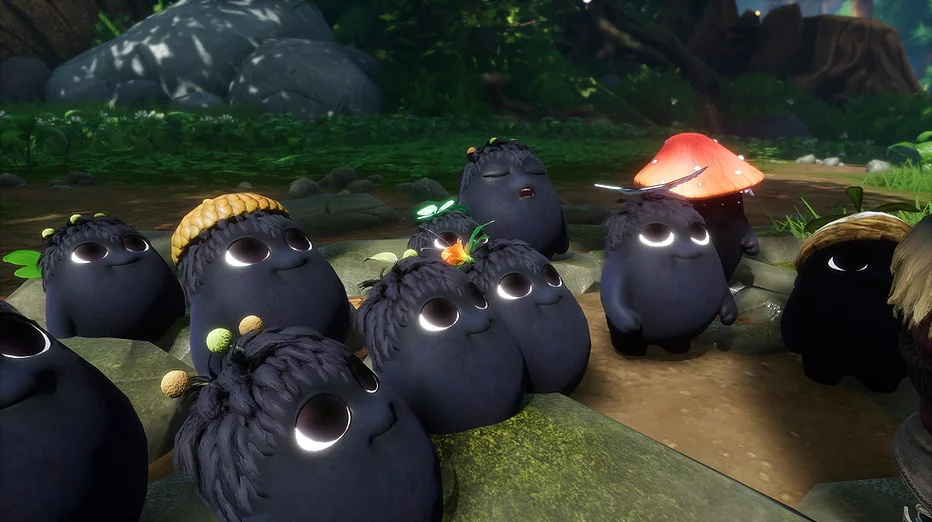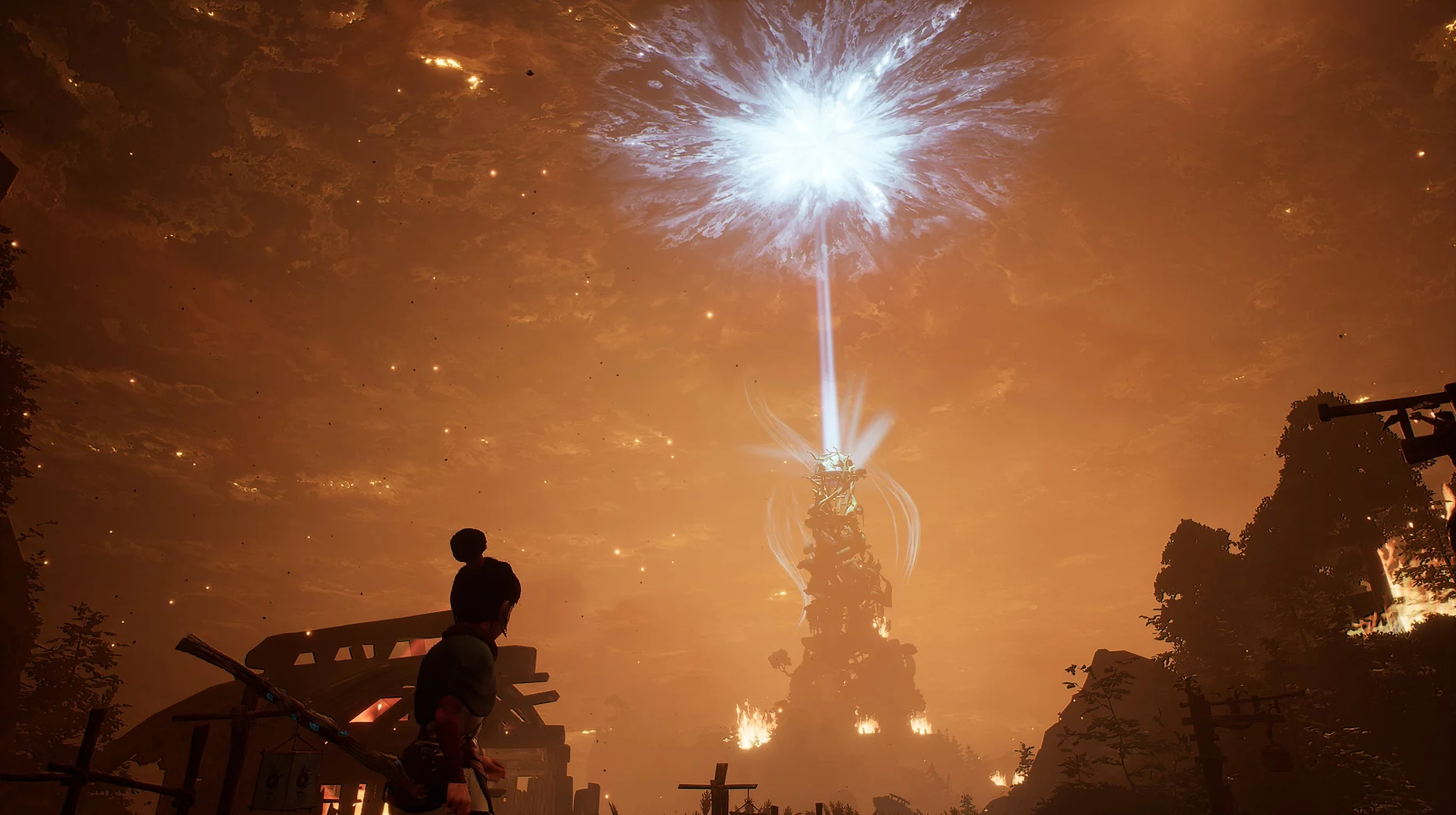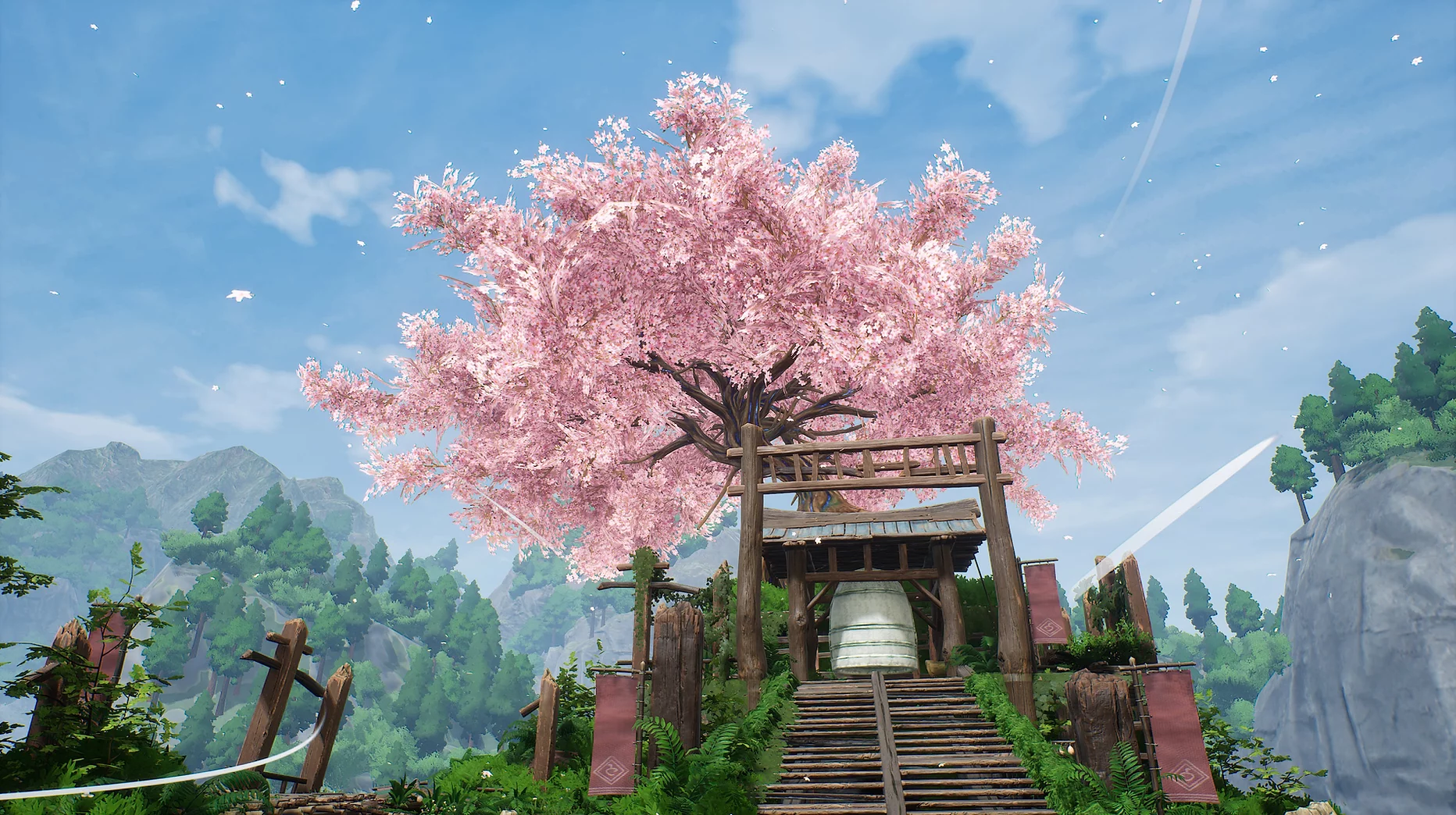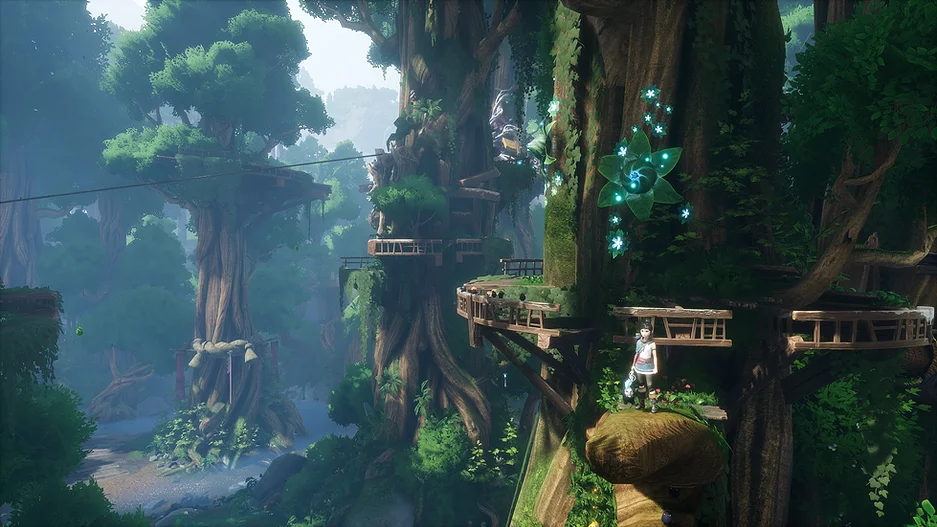
Kena: Bridge of Spirits
Made by: Ember Lab
Publisher: Ember Lab
Platforms: PS4/5, PC
Release date: 21/09/2021
Review date:
Emoji summary: 😭🥺😑
Review by: GDLP
Spoilers: I talk about story but I don’t go into too much detail, writing more about the lack of detail in the game and its characters instead
Games can be a full package of gameplay, level design, story, art, characters, acting, music and a million other things. Which element of a game is most important to you? The top two needs and musts tend to be good gameplay and a good story. Out of those, I need the story to deliver. That’s because a strong narrative can carry everything else on its back — and there is just so much to get right in this medium, it’s so much work to make a game work at all. But story can see me through an art style I don’t love. Story can make a small map feel endless. It can also be the motivation I need to push through difficult, tricky or sometimes boring gameplay. Story can even absorb gameplay into itself and make our actions as the player a chapter we get to tell.
I often see story as a matrix through which to make sense of the rest of a game’s design. It can make the world of a game feel full, thoughtful and even real in its own way. The inverse is that a bad story can puncture the magic that everything else is trying so hard to conjure. It can make story look like a quick sketch around gameplay, a thin frame, and nothing more than an obligation to hurriedly sell a game. I played Kena: Bridge of Spirits this week, a release I had been waiting on all year, and I felt that very thing happen. It was a puncture that left me deflated too. My disappointment in the game has me reflecting now on how much weight I put on narrative in the first place. My disappointment has also made me a little envious of players that only pin their enjoyment on gameplay instead. Those people might enjoy Kena, they might love it. They might not care about its awkward, rumbling story at all because everything but the story felt like a hit.
Kena: Bridge of Spirits is about a young spirit guide whose calling is to help troubled spirits move on to the afterlife. When spirits linger, the earth around them can become a poisonous place for the living. Seems innocuous enough, inspiring even. The setting is a fictional take on ancient Japanese countryside, and the art style wrapped around the story is just overwhelmingly warm. The game looks like if Pixar collaborated with Ghibli to do a Zelda title for kids big into adventure and folklore. Soft edges, overgrown, wholesome, green; it is full of a kind of magic that feels very natural. Kena also has these tiny, fluffy black sidekicks she amasses around her, creatures collectively referred to as The Rot. Big eyes, pinecone hats, toe beans. She finds them in baskets and under rocks. That sweetness continues through to the voice acting which is earnest, and it’s in the music too. At times, the music is a light twinkling sound bath, and at others it feels like a choir of wise gods is singing to us through time. So, all together, it was an atmosphere I should have loved.
The gameplay was very much focused on combat with those restless spirits. It did also have me solving puzzles to make my way through the map, for example, hitting lanterns in the right order to unlock a watery forest shrine. There are fun archery challenges tucked away in different areas as well, but the fighting was what entertained me most. It was surprisingly intense. It was the kind of combat that has you computing ten different button combinations and dodging constantly to try to make effective hits. Moving, remembering, fighting like a rhythm game — while the creature you are up against barely feels your attack. You’re not just controlling Kena either, but wielding Rot sidekicks to try and make a dent in the enemy. It is very fun. A steep, steep challenge. Hot, fast and unforgiving. And I love that the game, even in its sweet child-friendly art style, has this bite to it. The PS5 haptics for pulling back Kena’s bow are thrilling too.
But about halfway through the game, I met my match with its combat and just could not get past one of the spirits for the life of me. Even though I knew what I had to do and even though I was enjoying my back-to-back attempts to defeat it, it got to the point where my forearms were aching and my thumb felt genuinely burnt from pushing L3 on repeat. It was fine though! I had had my fun. I knocked the difficulty level down from default to story mode but that’s when I stopped enjoying the game. Left with lighter fights in story mode, I realised there just wasn’t enough of a story there to make up for the deficit I was beginning to sense.
If only I was a gameplay girl! If only I had been good enough at the fights! If only the story had been full enough for none of these other things to be a problem. The narrative rot begins when the game does though and I should have seen it coming. We start Kena: Bridge of Spirits in caves lit by pale blue floating ghosts and luminous rocks. It’s there we meet the antagonist, Toshi, the most troubled of all the spirits to come. He warns us away from his nearby village and tells us he will never abandon this place. Outside the caves, we then meet two kids who ask us what we’re doing here. Kena replies, ‘I’m searching for the Sacred Mountain Shrine. Can you take me there?’ They say yes, they’ll show her the way but only if she helps them first — their brother’s gone missing in the forest. On our way, we find the village Toshi mentioned. It is completely choked by the red and purple vines of the poison that spills out when spirits stay holding on. And basically, an old man in the village explains that this place is bound to the energy of the Mountain Shrine, and Kena will need to clear up the corruption in order to reach her final destination. Enter new areas, cue finding relics that will summon each spirit, boss fight. Rinse and repeat. And I know, I know. Many people just want to fast forward to the action, and none of what I say next will matter to those players. But for readers who play for the drama, these are the problems I had.
Who is Kena? Who is she? I couldn’t tell you. I know she’s a spirit guide, I know her dad was one too, and I know she wants to go to the Sacred Mountain Shrine. There are a few moments when we see a cold blue glow running through the veins of her hand that match the blue of the rock in her staff… but it’s a detail that amounts to nothing. All these things are told or shown to us in fleeting moments with no background, no grit, no follow-up, no heart. Nothing to make them into the important features or proper motivations of her character. It means there are no cutscenes that transform her from a pretty action star into a woman on a mission, and there is no further reading in letters or journals or anything else that might have been left around the game for us story-first players to interact with. I wanted some exposition, even optional lore. I wanted depth, personality, a little bit of history as a treat. I thought Kena’s peers might be Moana or even San from Princess Mononoke. We just don’t get the classic protagonist whose personhood is challenged and changed by an antagonist. Kena is flat in a way that feels superficial and marketable. She is simply there to help everyone else, mostly men, and what a boring thing for a new female protagonist to stand for. I know this is a boring level one feminism thing to say but yeah, Kena herself is a wasted opportunity.
Her quiet, pliable character is also reinforced by the game’s structure. She says she wants to go to the ‘Sacred Mountain Shrine’ but no substantial reason is given. So, the village on the way there with lots of problems of its own feels forced upon us, no questions asked. Of course, many games are characters wanting to get somewhere but finding obstacles that slow them down on their journey. But the problems are usually tightly bound to the main objective and they are challenges the character wants to face head on because of who they are and what they need to do to set things straight in their life. This entire game feels like a bad tangent, and too much like a woman told what to do. As a player, I was unconvinced. I had no air in the tyres to go. And when the spirits were introduced and the game then tells us we have to find three relics to summon each one for a fight, I rolled my eyes. Three, always three. I thought fantasy would have more imagination than that.
To rub salt in the wound, whilst we know nothing about Kena, we learn everything there is to know about the game’s villain, Toshi. We know his history, his problems, and we follow him through character development, albeit a very brief one. But it’s character development that our girl Kena doesn’t get to have. Stories feel most impactful when the protagonist and the antagonist are two sides of one coin; two people brought together to change one another in some way. Kena and Toshi have no meaningful parallels though, and it’s another aspect that really could have done so much to push good drama through the game. For a moment I wondered what it would have been like to write the story from his perspective — it seemed like he said more lines anyway. But then again, gruff spirit man who did a bad thing is not as easily marketable to the masses. Is ‘Japanese man’ not either? Toshi’s voice acting, full of fire and pain and regret, is done by Japanese actor Masashi Odate. His character’s design, however, is a straight up white man. What a shame.
The order the story is told in is weird, bottom heavy at the extreme. There is a lesbian couple that have a very PG forehead to forehead moment that clearly should have been a kiss (especially given this is a game much too difficult for children so just let the adults kiss?). And even though The Rot are the cutest things I’ve ever seen in a game, their charm alone couldn’t make up for everything else. Kena: Bridge of Spirits was a strong challenge with intricate combat to conquer, but there was no strong story to back it up. When the combat got too hard for me, I had nowhere to go. Given the subject matter, this is disappointing. Spirits are an exciting way into moving tales of past lives, mistakes, triumph, inner peace and healing. But this game didn’t seem interested in really going there, and I needed it to, because story is all I had left. And so, to the players that skip cutscenes because story doesn’t matter to them, this one is for you.
If you’re here at the end of the text, please comment a cute 🥺 emoji on our Instagram or share the text with a cute 🥺 emoji on Twitter
